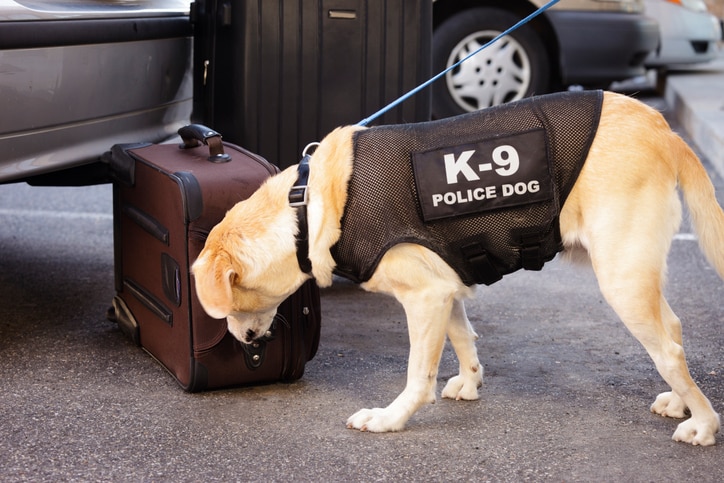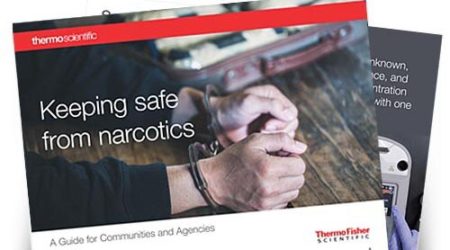 We love all animals here, but today we especially honor our canine friends as it is National Dog Day.
We love all animals here, but today we especially honor our canine friends as it is National Dog Day.
The National Dog Day website notes that the day is celebrated August 26th annually and was founded in 2004 by Colleen Paige (a pet and family lifestyle expert, animal rescue advocate, conservationist, dog trainer and author) to bring attention to the plight of animals around the globe and encourage adoption. Even the US Dept. of Homeland Security celebrates the day and last year dedicated a podcast to these four-legged friends, who use their exceptional smelling ability to help locate dangerous substances like drugs and explosives which have the potential to cause great harm.
The great harm can also be experienced by the dogs themselves.
We’ve heard the news stories about police officers getting accidentally exposed to harmful substances, including synthetic opioids like carfentanyl and fentanyl. Just this year an officer at an Oregon school suffered overdose symptoms and had to be treated at the hospital after responding to a call to check out a suspicious odor in a school bathroom. We previously wrote about three Wisconsin police officers were treated for fentanyl exposure in separate incidents following vehicle searches, and three Georgia officers were sickened after encountering a motel room overdose victim. In another occurrence, during a police drug raid in Pittsburgh, 18 SWAT officers were exposed to fentanyl when a table was overturned and the then unknown substances spilled and became airborne. They became sickened and all were transported to the hospital.
Exposure concern in the law enforcement field not only affects law enforcement officers and first responders, but it also affects canines used in the service of drug enforcement. There are even some law enforcement agencies who have law enforcement dogs certified to detect fentanyl. According to The Atlantic, “The drug can be extra dangerous when your detective work involves sniffing.” There are reports that dogs assisting in a federal drug raid in Florida showed symptoms of overdose after the specific law enforcement response. The canines refused water and were lethargic. Just like human officers who need to be hospitalized after accidentally inhaling puffs of exposed fentanyl or other substances, police dogs – who do their job primarily by sniffing – can encounter the same danger. As a result, new training is being offered for police utilizing canines and some police officers now carry Narcan for their dogs.
The article stated that it takes 20 times as much fentanyl to affect a dog as it does a person (according to Cynthia Otto, the executive director of the Working Dog Center at the University of Pennsylvania). However, officials have become aware of an additional risk: the dog can get fentanyl on its fur and bring it back to the human handler, who might pet the dog and get traces of the drug on his or her hands.
The US FDA issued a resource for veterinarians, The Opioid Epidemic: What Veterinarians Need to Know, which noted: “Not only can people overdose on opioids, but so can pets. Working dogs, like narcotics detection dogs, are particularly susceptible because they may inhale the powdered drug. Because fentanyl and fentanyl-related drugs are potent, it only takes a tiny amount of drug to cause an overdose.”
We’ve previously written about some police departments that are currently using narcotics analyzers in the field to help fight the drug crisis. These tools utilize Raman spectroscopy, a well-established analytical technique. These instruments are used in the field to identify key drugs of abuse as well as common cutting agents, precursors and emerging threats such as fentanyl, numerous fentanyl compounds including carfentanil, common street fentanyl analogs, pharmaceutical variants as well as the fentanyl precursors, NPP and ANPP.
As an extra precaution, these handheld narcotics analyzers can test unknown substances without requiring that they be removed from packaging, thereby avoiding direct contact with the substance or even the “puff’ that may result from opening the package, which could harm both humans and dogs. Providing law enforcement officials a quicker method to identify suspected narcotics in the field can help keep first responders and law officials safer during a response – whether they be human or animal.
Editor’s Note: Much of the content in this article was originally published September 2018 and authored by Ginger Xu but it has been refreshed and updated.






Leave a Reply